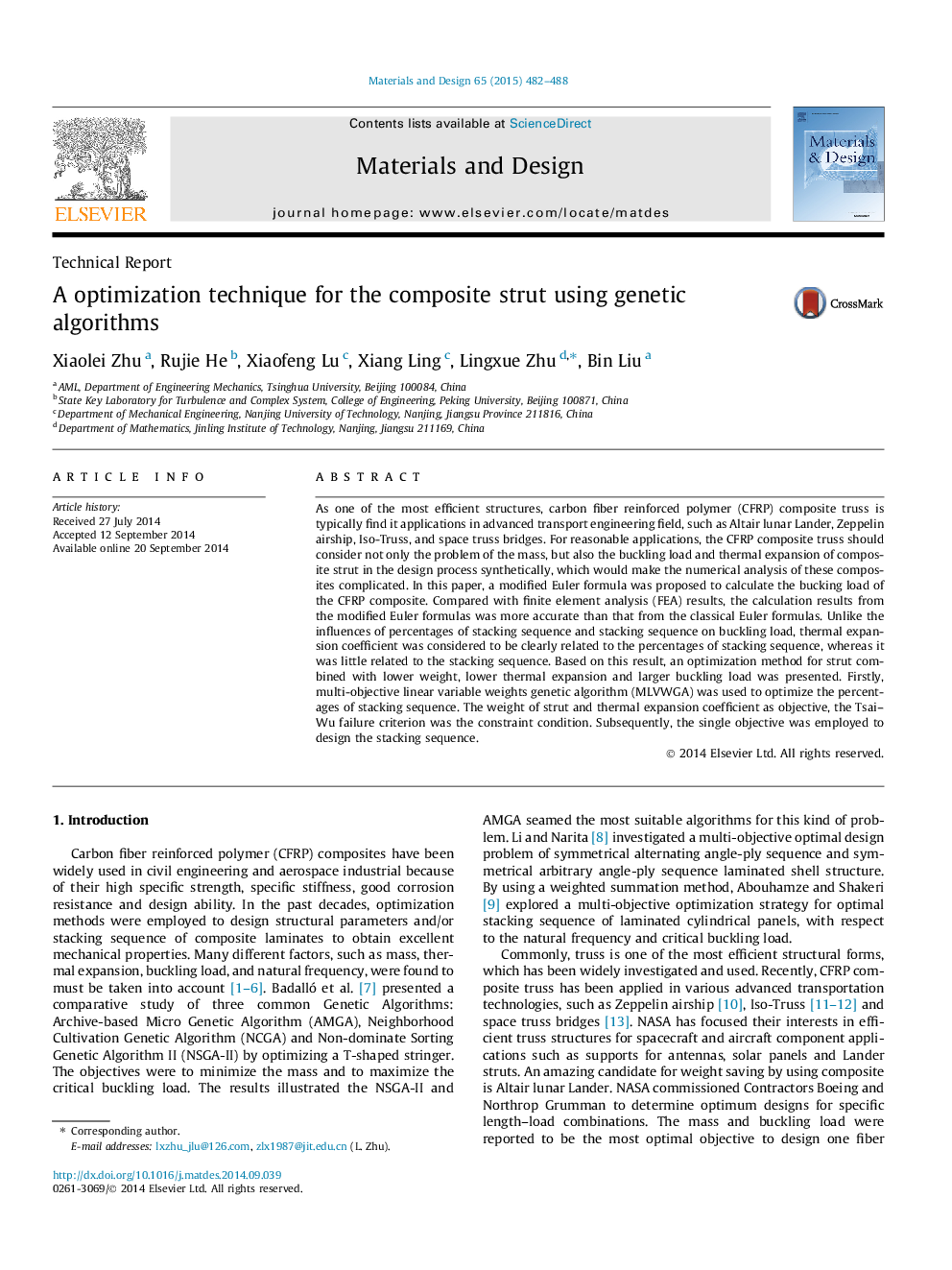| کد مقاله | کد نشریه | سال انتشار | مقاله انگلیسی | نسخه تمام متن |
|---|---|---|---|---|
| 828831 | 1470332 | 2015 | 7 صفحه PDF | دانلود رایگان |
• Modified Euler formula was used to calculate the bucking load of CFRP.
• Thermal expansion coefficient was related to percentages of stacking sequence.
• Thermal expansion coefficient had little related to stacking sequence.
• The optimization method for strut was presented.
As one of the most efficient structures, carbon fiber reinforced polymer (CFRP) composite truss is typically find it applications in advanced transport engineering field, such as Altair lunar Lander, Zeppelin airship, Iso-Truss, and space truss bridges. For reasonable applications, the CFRP composite truss should consider not only the problem of the mass, but also the buckling load and thermal expansion of composite strut in the design process synthetically, which would make the numerical analysis of these composites complicated. In this paper, a modified Euler formula was proposed to calculate the bucking load of the CFRP composite. Compared with finite element analysis (FEA) results, the calculation results from the modified Euler formulas was more accurate than that from the classical Euler formulas. Unlike the influences of percentages of stacking sequence and stacking sequence on buckling load, thermal expansion coefficient was considered to be clearly related to the percentages of stacking sequence, whereas it was little related to the stacking sequence. Based on this result, an optimization method for strut combined with lower weight, lower thermal expansion and larger buckling load was presented. Firstly, multi-objective linear variable weights genetic algorithm (MLVWGA) was used to optimize the percentages of stacking sequence. The weight of strut and thermal expansion coefficient as objective, the Tsai–Wu failure criterion was the constraint condition. Subsequently, the single objective was employed to design the stacking sequence.
Unlike the influences of percentages of stacking sequence and stacking sequence on buckling load, thermal expansion coefficient was considered to be clearly related to the percentages of stacking sequence, whereas it was little related to the stacking sequence. Based on this result, an optimization method for strut combined with lower weight, lower thermal expansion and larger buckling load was presented. Firstly, multi-objective linear variable weights genetic algorithm was used to optimize the percentages of stacking sequence. Secondly, the single objective was employed to design the stacking sequence.Figure optionsDownload as PowerPoint slide
Journal: Materials & Design (1980-2015) - Volume 65, January 2015, Pages 482–488
